
The 2014-2015 Atomic Race range sticks to the official racing standards and offers not many more things beyond that. The FIS range has everything a racer with a license would need and even all what he or she could imagine. The non-FIS range, which is to say the one the general public is only interested in, is a more than decent selection. It is very complete and is intended to appeal anyone who desires to have a pair of racing skis.
The range has a a couple of Slalom skis, a Giant Slalom piece and an overall model (which falls in the middle of those two). The highlight of the range is the Marcel Hirscher SL model. Marcel is one of the best Slalom athletes in the FIS Ski World Cup and Atomic is his skis sponsor. The brand has made a big bet on him not only in the form of sponsorship but also giving his name to one of their skis.
The GS model is not a very remarkable one since its sidecut clearly indicates its focus. As it was reviewed last year in SkiReviewer, it is quite a decent GS ski, and at the same time it´s comfortable to use and not very demanding. Those looking for a very GS style ski should look somewhere else.
Something similar can be said about the Redster Doubledeck 3.0 XT. It falls in between the GS and the SL models to complete the Atomic Race range. It can be understood as a race model with no compromise regarding the skiing style. Almost every time the race range in any brand is splitted in two. GS (Giant Slalom) which is to say long turns and SL (slalom) which is to say short turns. This model is neither of the two but wants to satisfy those skiers looking for the best of both worlds without compromising his skiing style and taste.
This is what the brand has to say about the Atomic Race range technologies:
Doubledeck 3.0 and Ramp Tech
“Over the past few seasons, Doubledeck technology has helped Atomic to make the Redster the fastest race ski in the world. A ski that’s taken the likes of Marcel Hirscher and Mikaela Shiffrin to the top of the World Cup Podium.”
Really? Not that much. And there are good reasons for doubting it. The most important one being the specific and super strict regulations in the FIS World Cup competition. But let´s first explain these two technologies.
A few seasons ago, Atomic came up with a “revolutionary” idea which consisted on an upper free-gliding deck which was easily distinguishable. The 3.0 version of this comes with no other improvement than a fine tuned shape that should make the turn inititation a bit easier by softening its behaviour, and at the same time it´s a bit stronger in the ski´s rear end allowing the skier to gain confidence as well as speed at the end of the turn.
The second part of all this is the RAMP technology. Atomic, as well as other brands, have done this in the past and some still silently do, building their bindings with a forward ramp design. The marketers have also done a very good job on this one. The RAMP technology consists in elevating the heel in relation to the toe and finally obtaining a ramp up to 10 degrees. It is there for a very good reason. The vast majority of skiers are recreational ones and that is to say their ability is not the max whatsoever. In order to help the masses, Atomic and others believe that a very good measure is to include that ramp in their bindings so the skier is more centered on to the ski, although he/she is in a seated position while skiing.

Doubledeck 3.0 and Ramp Tech technologies in some detail
© ATOMIC Austria GmbH
Now… involving the World Cup racing arena, here it is purely a marketing strategy since there are very strict regulations in the gear field. For example, the distance between the boot sole and the ski´s bottom. It can climb up to “just” 50 mm. And yes, they can play their game and obtain a positive ramp or even the contrary (which would not be very clever anyway). But there is another place to put attention too and there comes the boots. The inner thickness of all the materials (soft and hard) can only climb up to 43 mm. That distance comprehends the boot sole and the heel base. Think about it. It is much easier to make adjustments to that part of the equipment than building a new pair of skis or bindings with a small degree of variation. So yes, it could be that the World Cup racers wearing Atomic skis do get the benefits of a the RAMP technology, but there are serious doubts about that being the key to success. All in all, Atomic has thought about the general public and is trying to help all the skiers around the globe by putting them in a better position on their skis. And that´s what really matters here. Thanks Atomic.
Race Rocker
Now that the Rocker technology is everywhere, there is a need from all the major brands to remark and extensively repeat they have all the good bits put in their products. This is the main and only reason why we see the word “rocker” in a racing ski. In the past, no one talked about the ski´s camber but nowadays, since it´s the biggest highlight and the only “decent” novelty across the whole industry, it has to be shown again and again. Instead of saying this ski incorporates the classic Race camber, the marketing department has chosen to say that it incorporates a very small rocker, just the 5% of the ski´s length. That’s very smart, isn´t it?

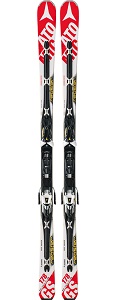 Atomic Redster Doubledeck 3.0 GS
Atomic Redster Doubledeck 3.0 GS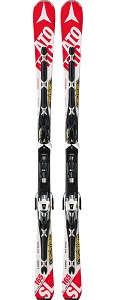 Atomic Redster Doubledeck 3.0 SL
Atomic Redster Doubledeck 3.0 SL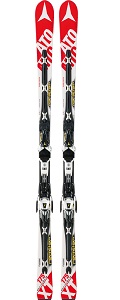 Atomic Redster Doubledeck 3.0 XT
Atomic Redster Doubledeck 3.0 XT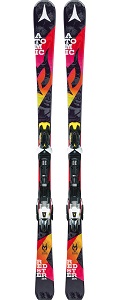 Atomic Redster Marcel Hirscher SL
Atomic Redster Marcel Hirscher SL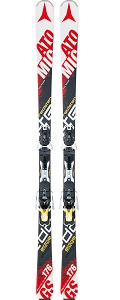 Atomic Redster Edge GS
Atomic Redster Edge GS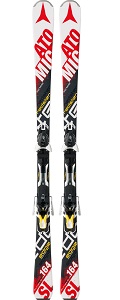 Atomic Redster Edge SL
Atomic Redster Edge SL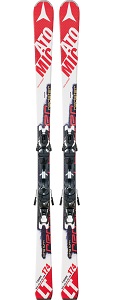 Atomic Redster LT
Atomic Redster LT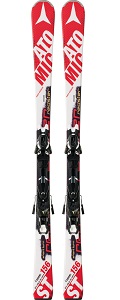 Atomic Redster Redster ST
Atomic Redster Redster ST